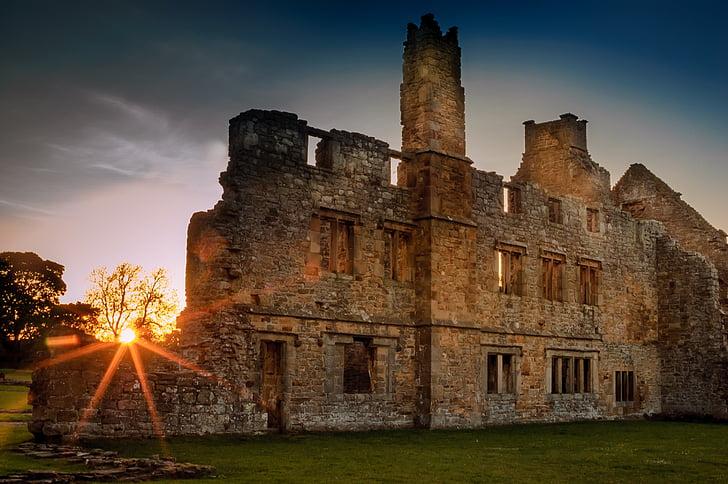St Mary
Barnard Castle, County Durham
A church with links to Richard III, a rare indoor labyrinth and one of the largest fonts in the country.

The charming ruins of a small monastery of Premonstratensian 'white canons', picturesquely set above a bend in the River Tees near Barnard Castle.
Barnard Castle, County Durham
The abbey was founded at Egglestone between 1195 and 1198 or Premonstatensian canons. St Norbert had founded the Pemonstratensian Order at Prémontré in France in 1121. The founders of Egglestone were the de Moulton family, whose title passed to the Dacres by marriage in 1314.
The endowment of Egglestone was so small that early in the 13th century the Abbot of Prémontré deputed three of his English abbots to hold an inquiry to decide if the status of the abbey should be reduced to that of a priory.
After the Dissolution of the Monasteries, the site was granted to Robert Strelley in 1548. He converted the east and north ranges into a mansion and installed a kitchen in the west range.
In 1770 Sir Thomas Robinson sold the abbey to John Morritt of Rokeby Hall. Morritt’s descendant placed the ruins in the guardianship of the state in 1925 and later returned a notable collection of architectural stonework, including the tomb of Sir Ralph Bowes of Streatlam (died 1482), which was re-erected in the church crossing.
The abbey has a fairly unconventional plan, with its church on the south side of the cloister. The first church, built about 1200, was small and narrow, but in about 1250 a larger presbytery with broad transepts was built, presumably to accommodate the altars required for an increased number of canons. Apart from the church and the east range, little else survives today.
The north and west walls of the nave are the only parts of the original church still standing; the nave was later widened southwards.
In the east range, the chapterhouse is next to the church. North of this the range was two storeys high, with the monks’ dormitory on the first floor.
Nearly all the monastic features of this range were swept away when it was converted into a
house and later into farmworkers dwellings. Beyond, a vaulted undercroft survives with a room above, adjoining the garderobe, or latrine.
Barnard Castle, County Durham
A church with links to Richard III, a rare indoor labyrinth and one of the largest fonts in the country.
Bowes, County Durham
Set close to Bowes Castle and surrounded by trees the small, low church, dating from the 12th century is easy to miss, but is well worth a visit.
Wycliffe, County Durham
The Church and 'vill' of Wycliffe were built by Bishop Ecgred of Lindisfarne in about 830-840, and given to St Cuthbert.